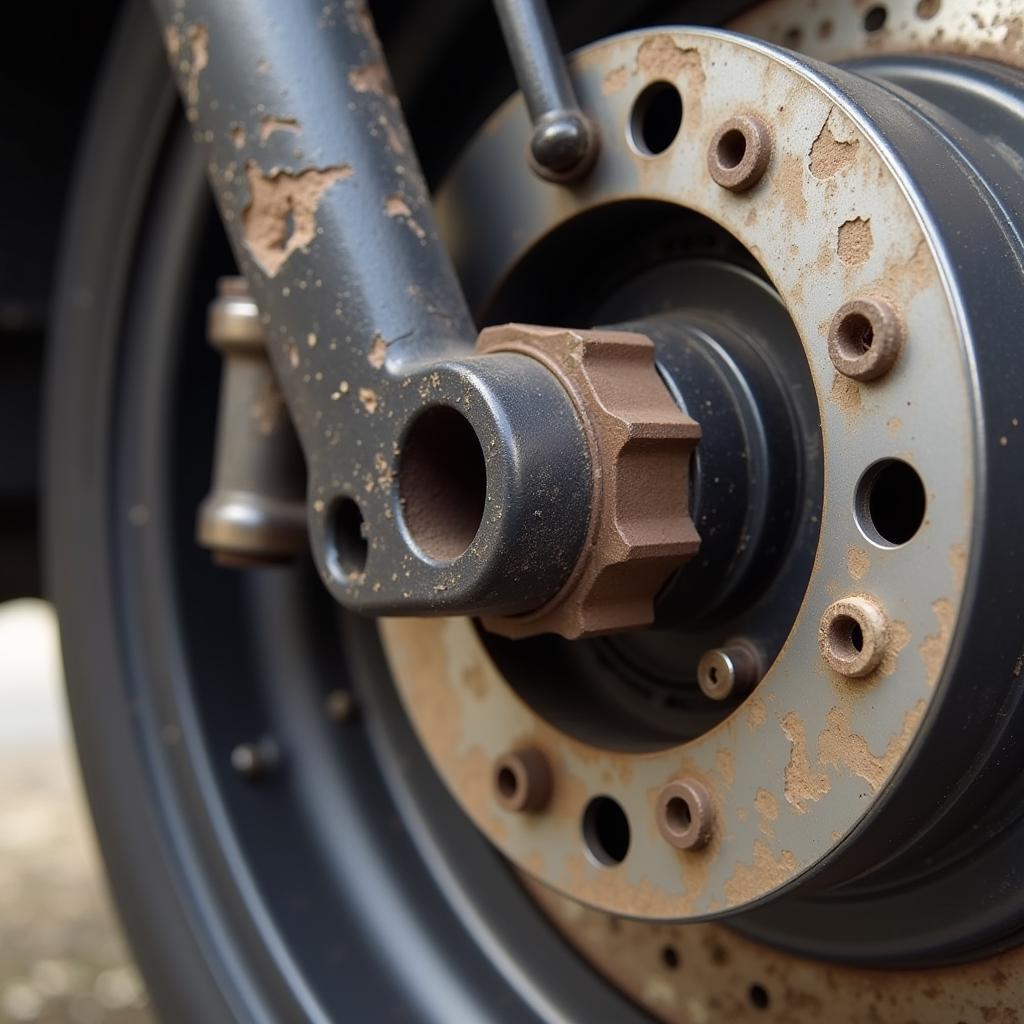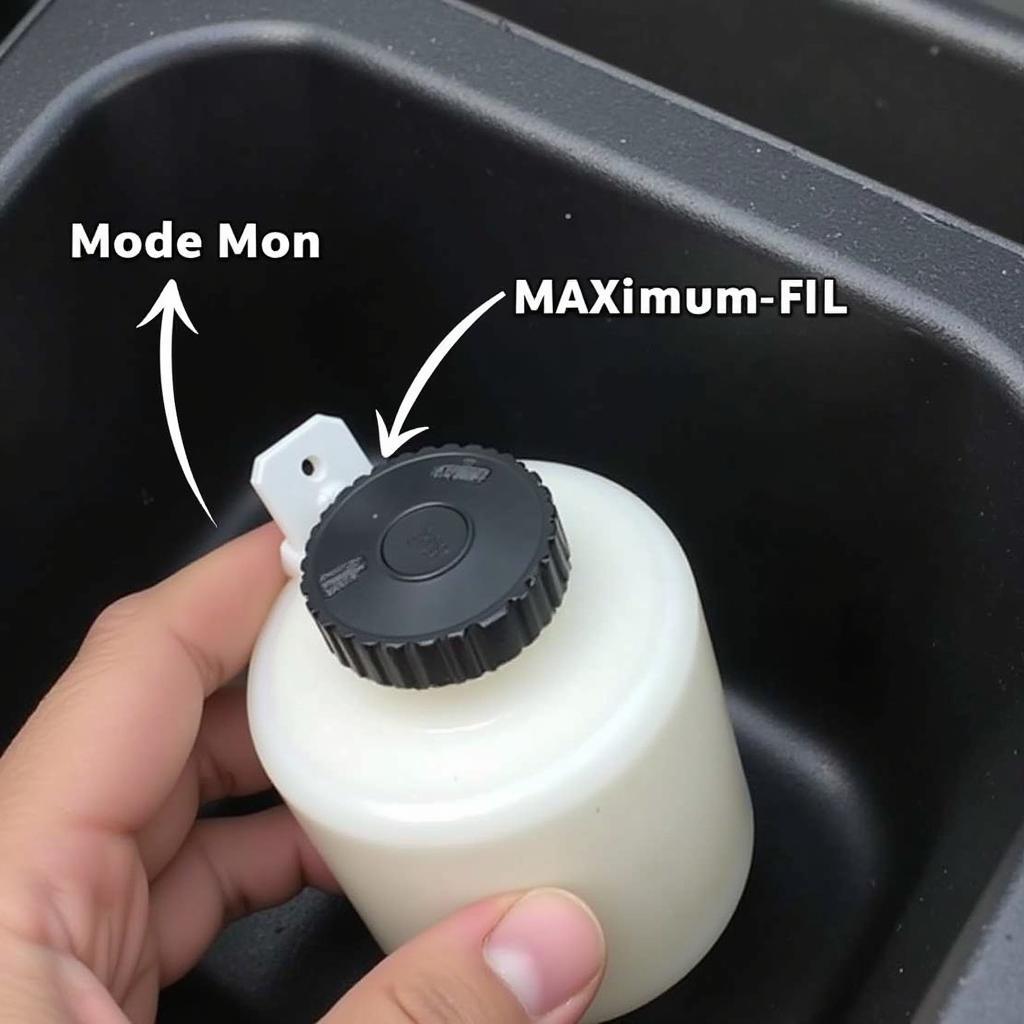The brake pad warning light on your BMW 318i E36 is a crucial safety feature, illuminating on your dashboard to alert you when your brake pads need replacing. Ignoring this warning can lead to costly repairs and, more importantly, compromise your safety on the road. This comprehensive guide delves into the common causes behind a lit brake pad warning light on your BMW 318i E36 and provides practical solutions to address them.
What Does the Brake Pad Warning Light Mean?
The brake pad warning light, often a circular symbol with parentheses on either side and an exclamation mark in the center, is part of your car’s braking system monitoring. When illuminated, it signifies that the brake pads have worn down to a predetermined level, triggering a sensor within the brake system.
Common Causes of a Lit Brake Pad Warning Light
While worn brake pads are the most common culprit, other factors can also trigger the warning light on your BMW 318i E36:
-
Worn Brake Pads: As brake pads wear down with use, the sensor embedded within the pad material eventually makes contact with the brake rotor, completing a circuit and illuminating the warning light.
-
Faulty Brake Pad Sensor: A malfunctioning or damaged brake pad sensor can send a false signal to the dashboard, even if the brake pads are still in good condition.
-
Low Brake Fluid Level: Brake fluid is essential for transmitting the force applied to the brake pedal to the wheels, stopping the vehicle. Low brake fluid, often due to a leak, can trigger the brake pad warning light along with other warning lights on your dashboard.
-
Issues with the Brake System Wiring: Damaged or corroded wiring within the brake system can disrupt the signal from the brake pad sensor to the dashboard, leading to a false warning light.
 BMW E36 Brake Pad Sensor
BMW E36 Brake Pad Sensor
How to Troubleshoot the Brake Pad Warning Light
Before assuming the worst, a systematic approach to troubleshooting can help pinpoint the root cause:
-
Check the Brake Pads: Begin by inspecting your brake pads visually. If you notice the pad material is significantly thin or worn down to the metal backing plate, replacement is necessary.
-
Inspect the Brake Pad Sensor: The brake pad sensor is a small wire located on the brake pad. Check for any damage, such as a broken wire or dislodged sensor.
-
Top Up Brake Fluid: Refer to your owner’s manual for the location of the brake fluid reservoir and the recommended type of brake fluid. Carefully remove the reservoir cap and check the fluid level. If it’s low, top it up to the recommended level.
-
Seek Professional Help: If you’re uncomfortable working with your car’s braking system or if the issue persists after basic troubleshooting, it’s crucial to seek assistance from a qualified mechanic specializing in BMW vehicles.
 BMW E36 Brake Fluid Reservoir
BMW E36 Brake Fluid Reservoir
Replacing Brake Pads on Your BMW 318i E36
If your inspection reveals worn brake pads, prompt replacement is crucial. While replacing brake pads is a task many car enthusiasts can handle, seeking professional service ensures the job is done correctly, particularly for a critical safety component like brakes.
The Importance of Regular Brake System Maintenance
To prevent unexpected brake pad warning light situations and ensure optimal braking performance, adhere to a regular maintenance schedule:
-
Brake Pad Inspection: Have your brake pads inspected at each service interval or as recommended by your BMW specialist.
-
Brake Fluid Flush: Brake fluid absorbs moisture over time, reducing its effectiveness. It’s recommended to flush and replace your brake fluid every two years or as specified in your owner’s manual.
-
Thorough Inspections: During routine maintenance, request a comprehensive inspection of your entire braking system, including calipers, rotors, and hoses, to identify and address potential issues early on.
Expert Insight
“Ignoring a lit brake pad warning light can lead to much bigger problems down the line, “ says Jake Carter, a veteran BMW mechanic with over 20 years of experience. “Not only can it damage your rotors, but it can also significantly compromise your braking ability, putting you and others at risk.”
 BMW Mechanic Inspecting Brakes
BMW Mechanic Inspecting Brakes
Conclusion
A glowing brake pad warning light on your BMW 318i E36 should never be ignored. By understanding the potential causes and taking prompt action, you can ensure the longevity of your braking system and, most importantly, prioritize your safety on the road. Remember, when it comes to brakes, erring on the side of caution is always the wisest course of action.

